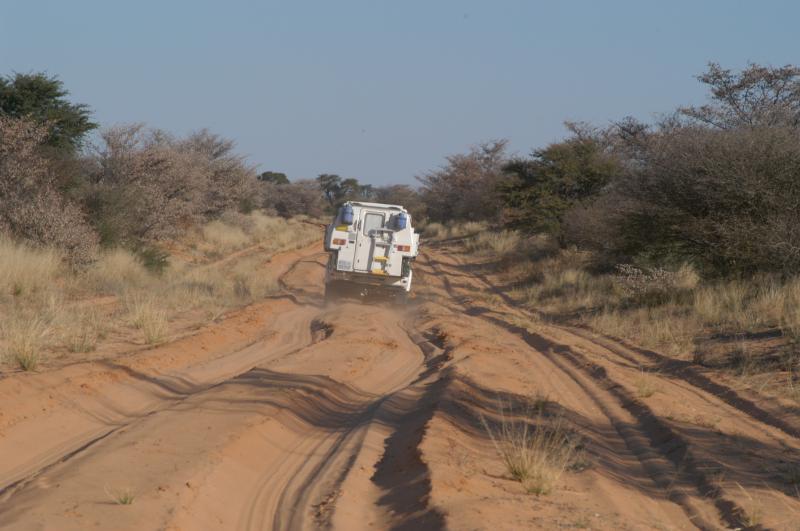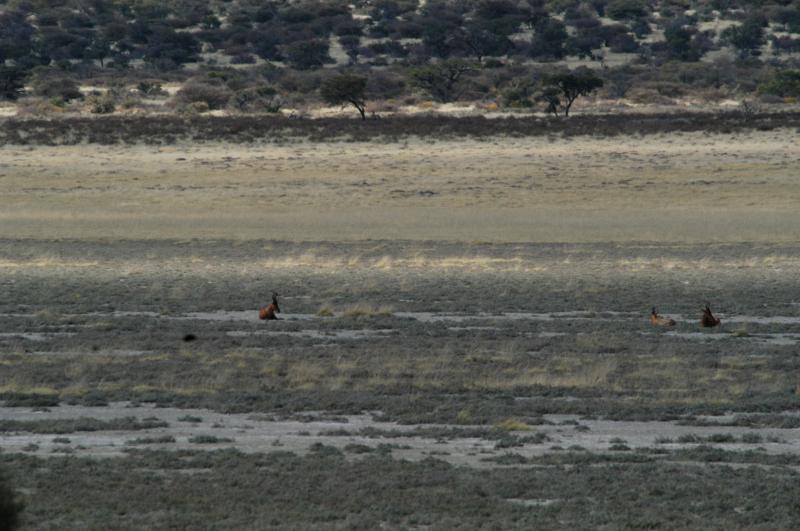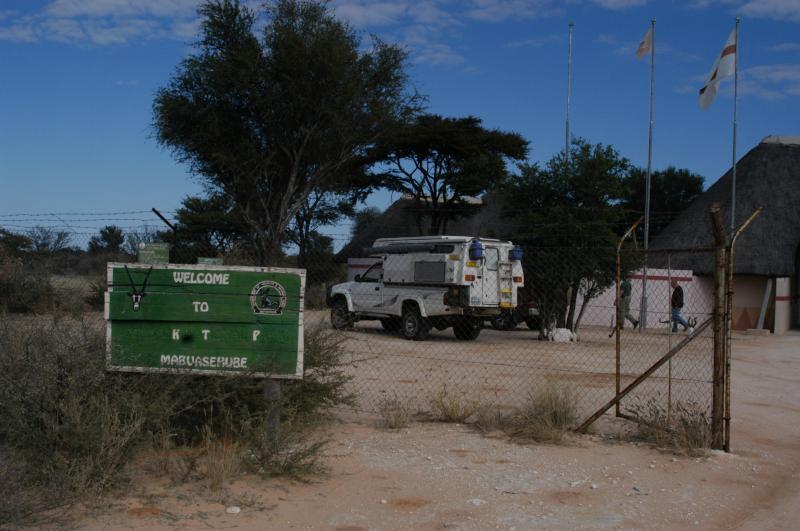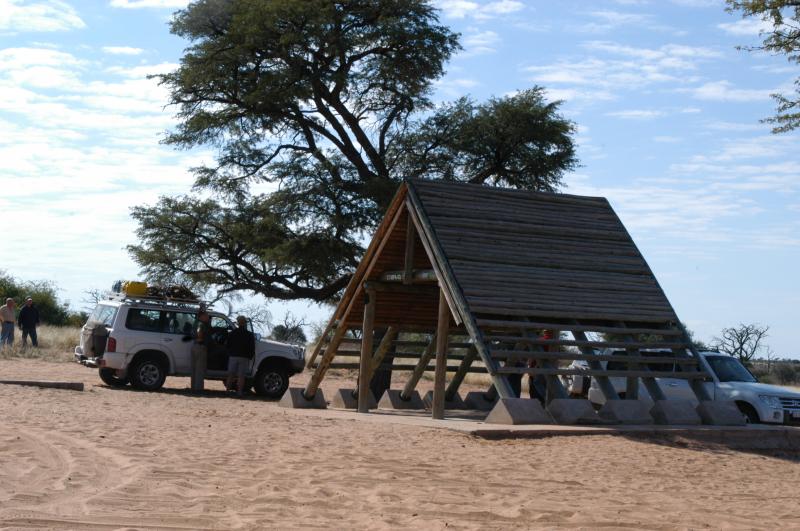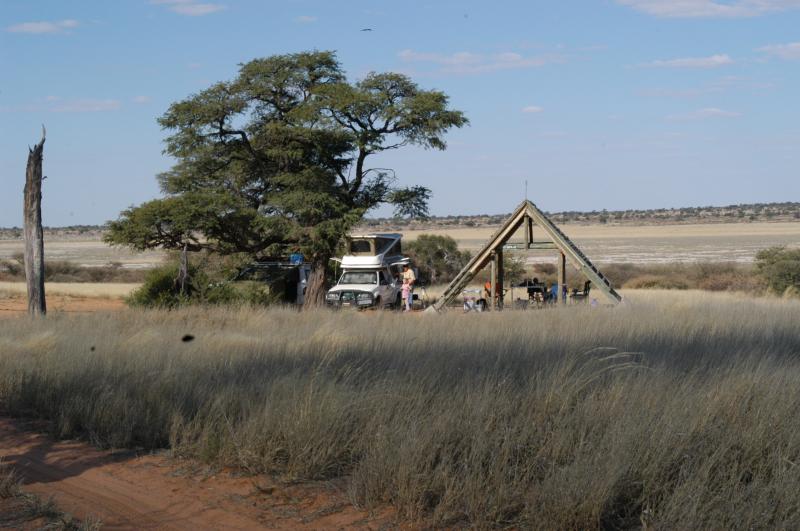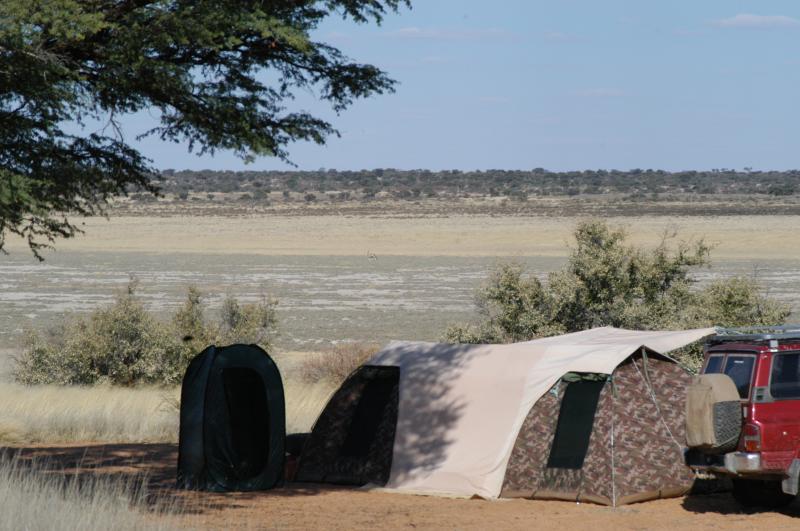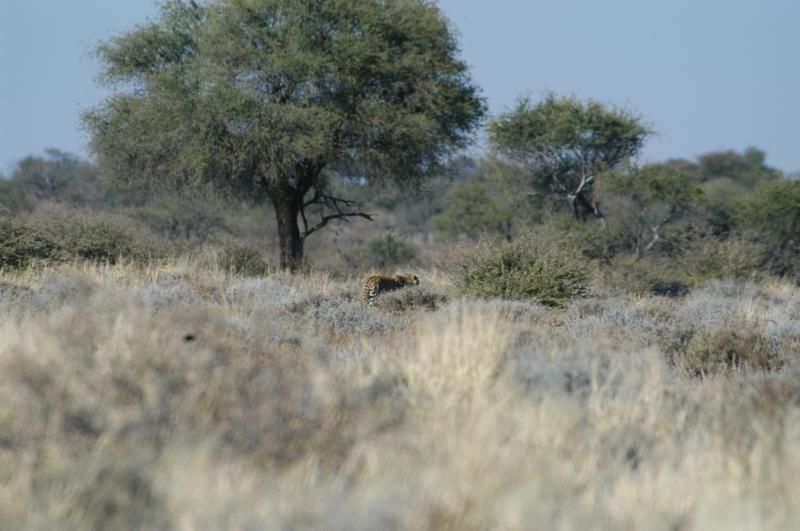Mpayathutlwa Pan
Posted: Mon Dec 01, 2014 9:08 pm
The Kgalagadi trans-frontier park consists of two very different parts.
There's the well-known bit, the bit around the two rivers that we all know and love, arguably one of the best places in the world to photograph Cheetah and Lion. The beds of the Auob and Nossob rivers are amazing places that draw a huge variety of animals and birds,and also because of the relatively sparse flora allows easy access for people (like most of us) to see them. Unfortunately, this is no secret, and so this area, and specifically the camps in this area, are pretty busy.
However, about 150km east of the Nossob there are a number of pans. And the good thing is, they are also in the park.
The Botswana Department of Wildlife and National Parks has built very basic campsites on the edges of most of these parks.
Mpaya, as most people call it, is the largest and possibly the most scenic of these. The beauty of these campsites is that they are right on the edge of the pans, and all have great views over their respective pans. They have also drilled boreholes and installed pumps on most of these pans, and just like in the riverbeds, they make magic happen.
This side of the park is much less popular, and consequently much less developed. Mpaya (like most of the pans) has just two campsites. Unlike South African practise, each campsite is rented out to one group of people, which can be quite large (about 12 people). Mpaya 1 consists of a shade roof, a toilet and a cold-water shower. Mpaya 2 has a similar shade roof and a long-drop in a "snail wall" (a semi-circular pole wall that curves in on itself to provide an entrance but privacy from all sides).
There's the well-known bit, the bit around the two rivers that we all know and love, arguably one of the best places in the world to photograph Cheetah and Lion. The beds of the Auob and Nossob rivers are amazing places that draw a huge variety of animals and birds,and also because of the relatively sparse flora allows easy access for people (like most of us) to see them. Unfortunately, this is no secret, and so this area, and specifically the camps in this area, are pretty busy.
However, about 150km east of the Nossob there are a number of pans. And the good thing is, they are also in the park.
The Botswana Department of Wildlife and National Parks has built very basic campsites on the edges of most of these parks.
Mpaya, as most people call it, is the largest and possibly the most scenic of these. The beauty of these campsites is that they are right on the edge of the pans, and all have great views over their respective pans. They have also drilled boreholes and installed pumps on most of these pans, and just like in the riverbeds, they make magic happen.
This side of the park is much less popular, and consequently much less developed. Mpaya (like most of the pans) has just two campsites. Unlike South African practise, each campsite is rented out to one group of people, which can be quite large (about 12 people). Mpaya 1 consists of a shade roof, a toilet and a cold-water shower. Mpaya 2 has a similar shade roof and a long-drop in a "snail wall" (a semi-circular pole wall that curves in on itself to provide an entrance but privacy from all sides).
